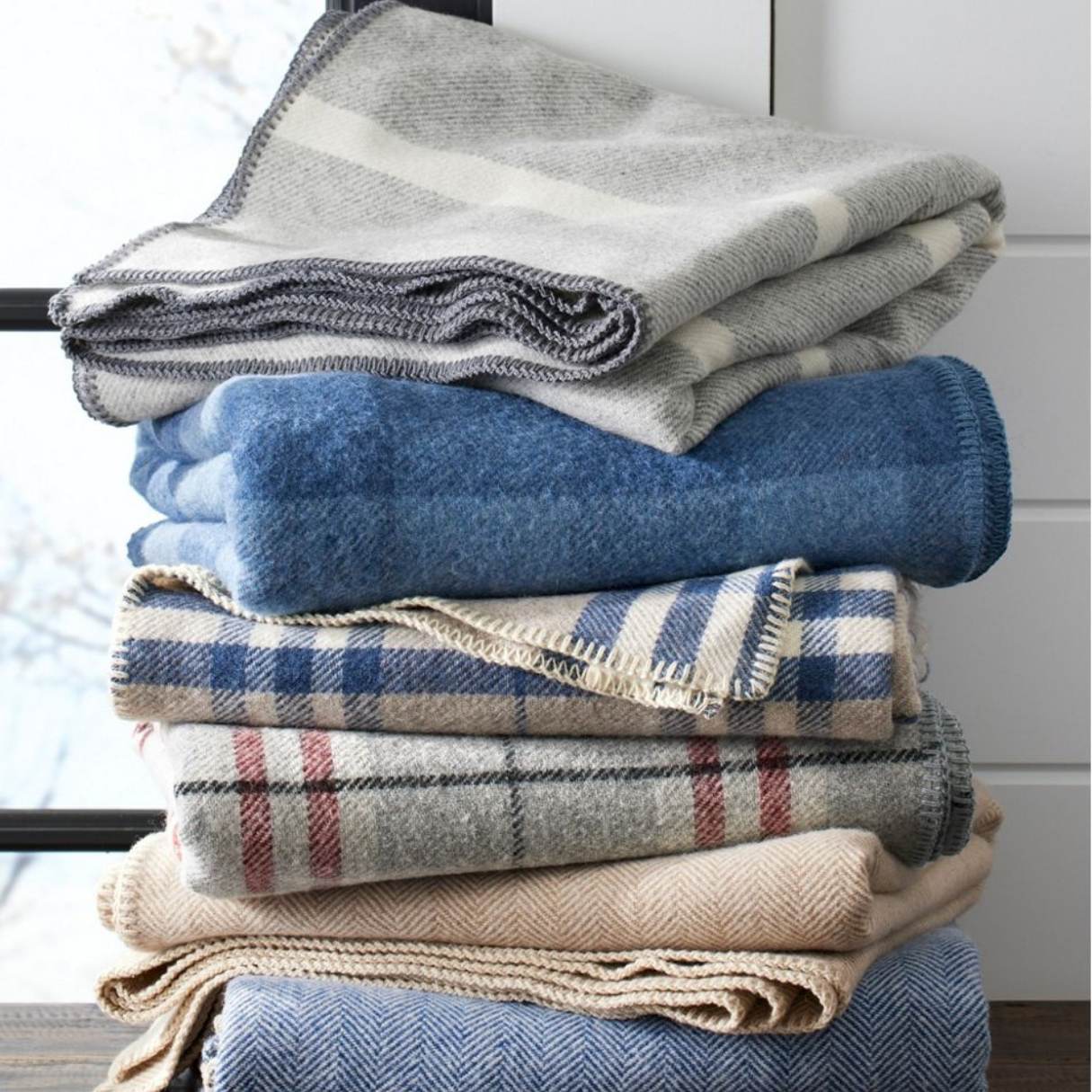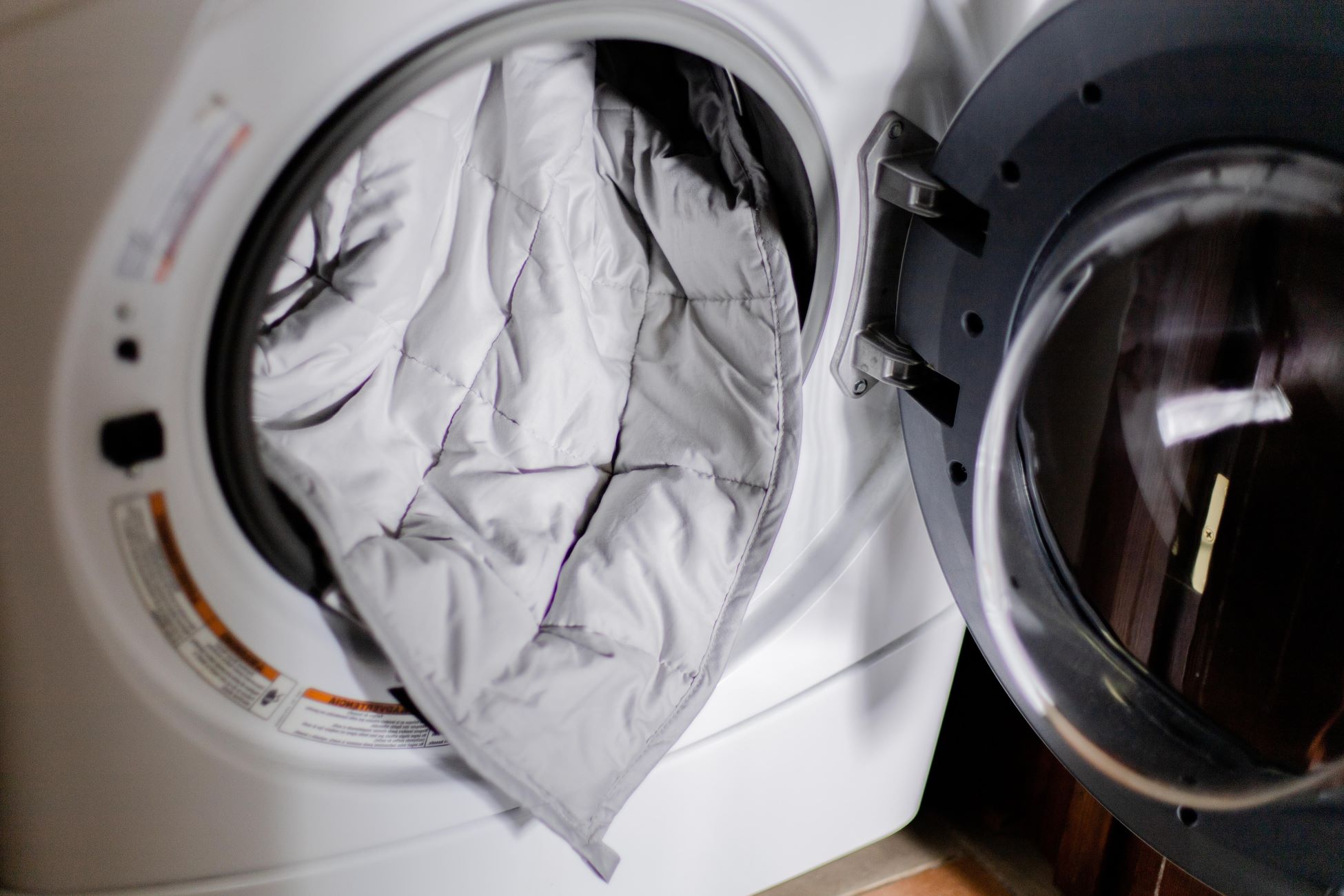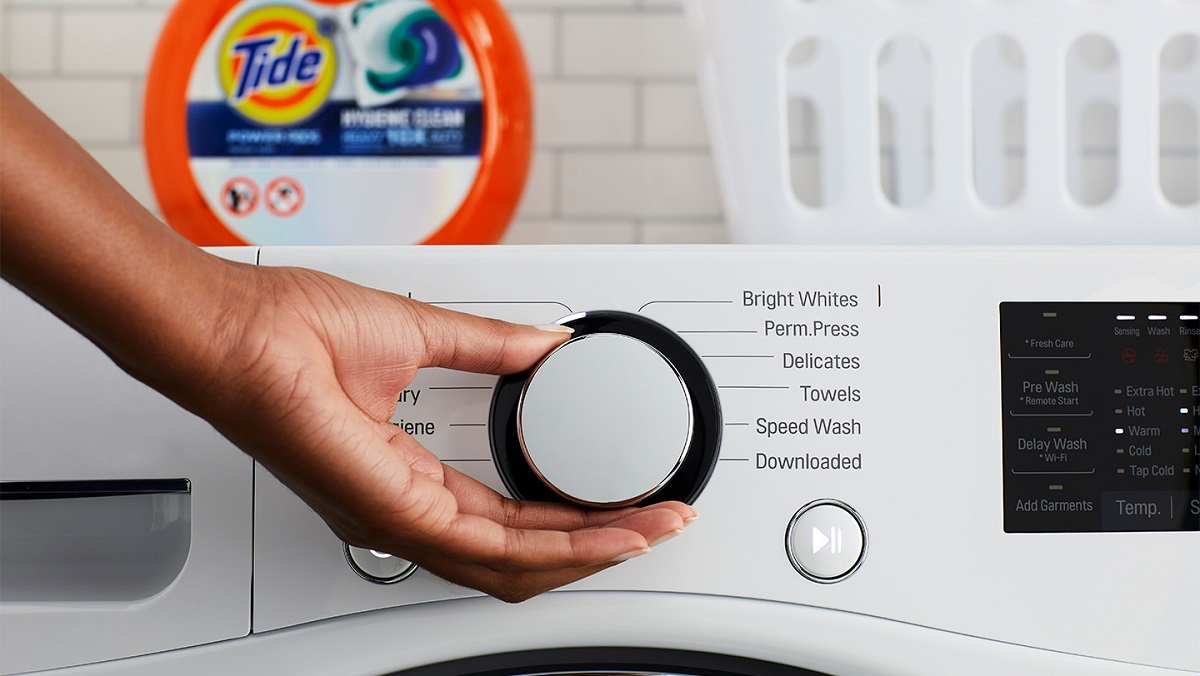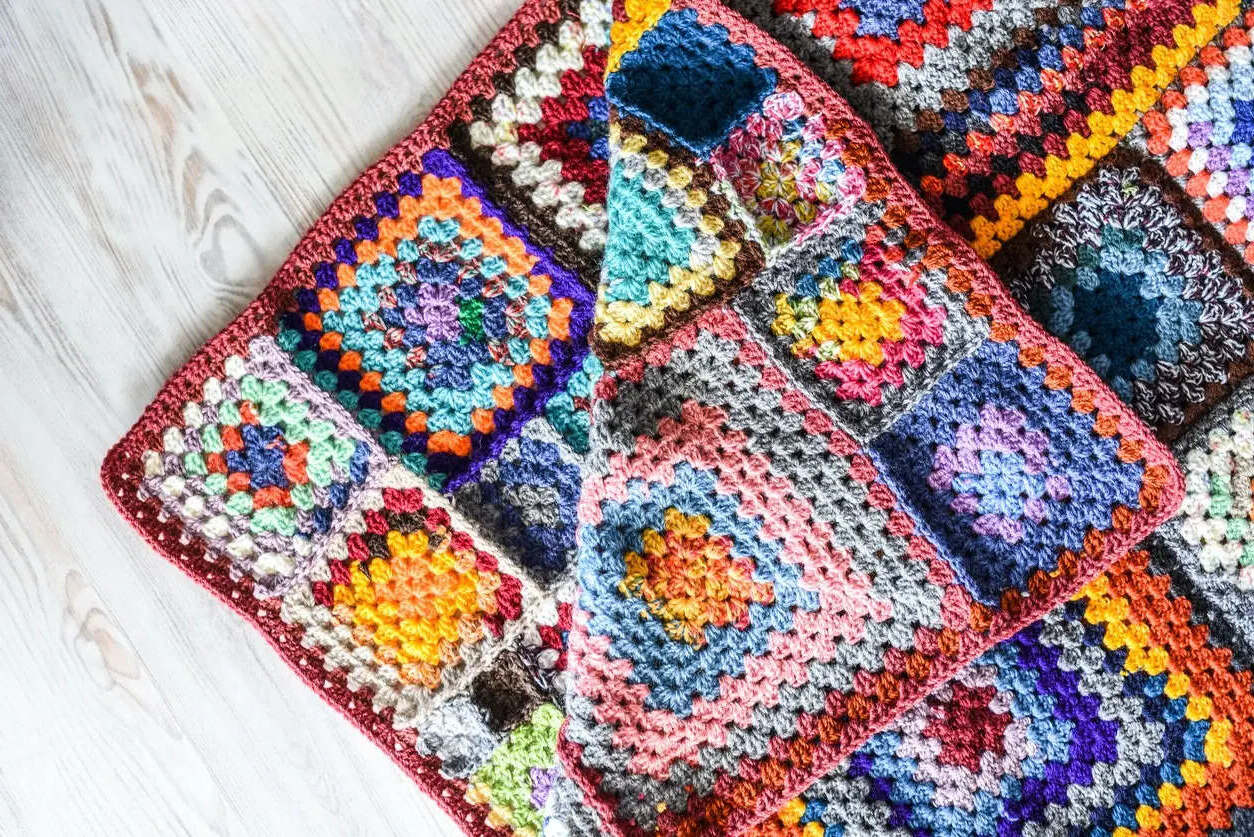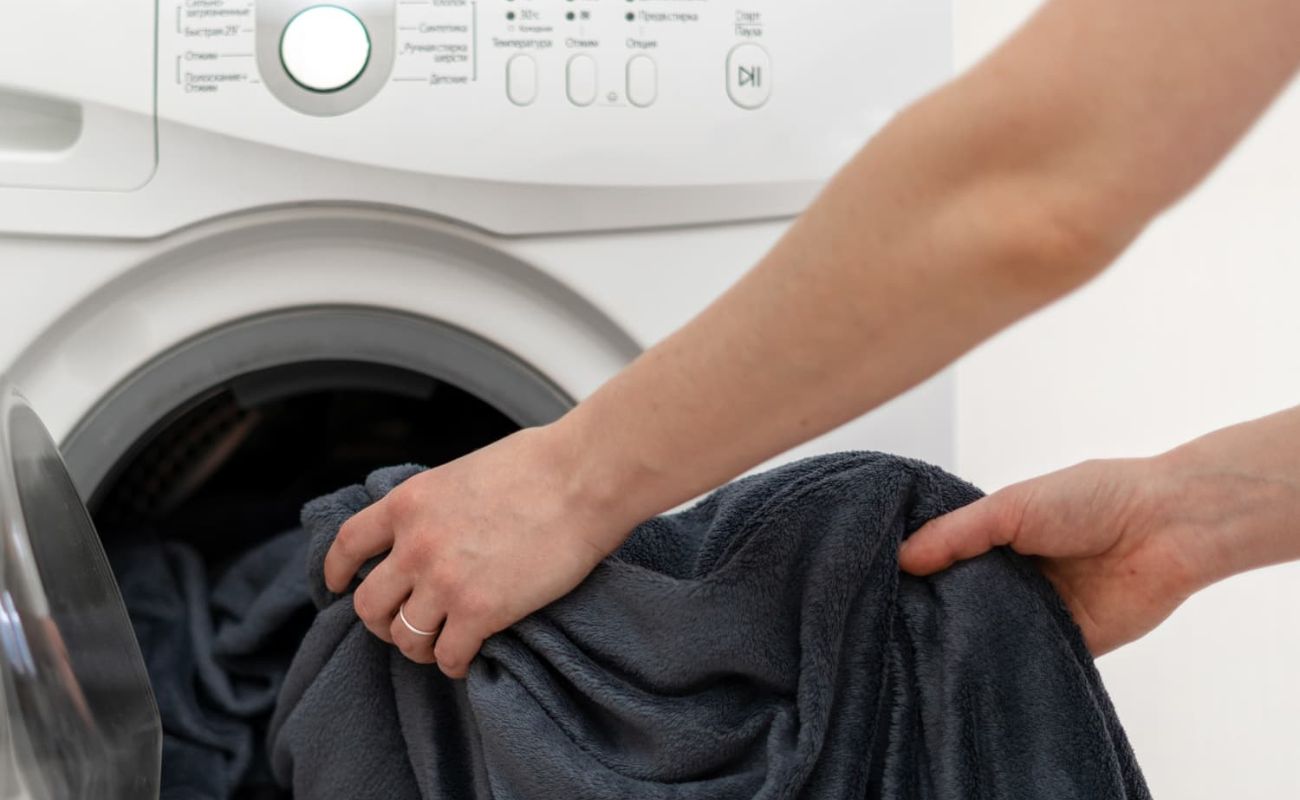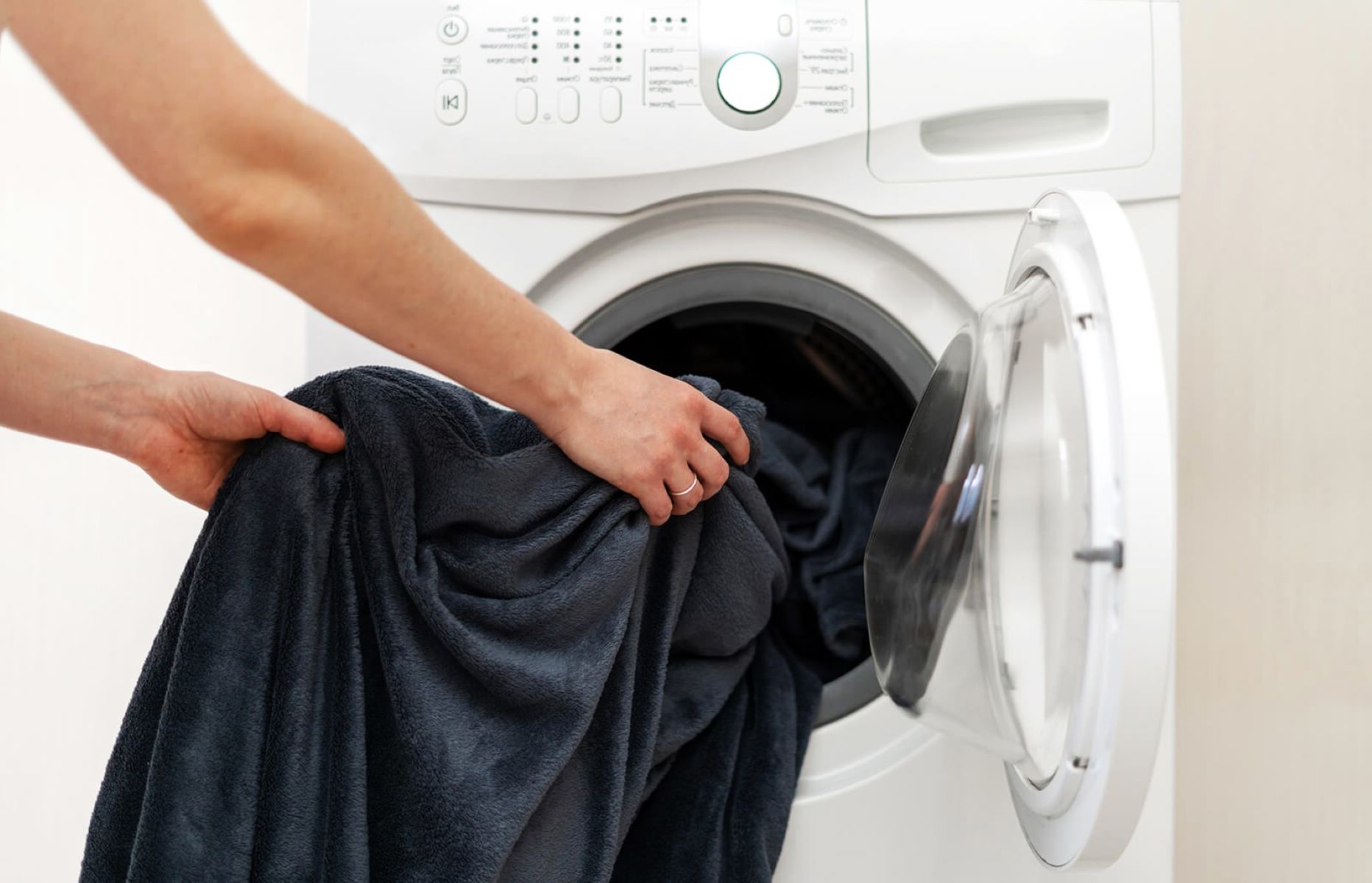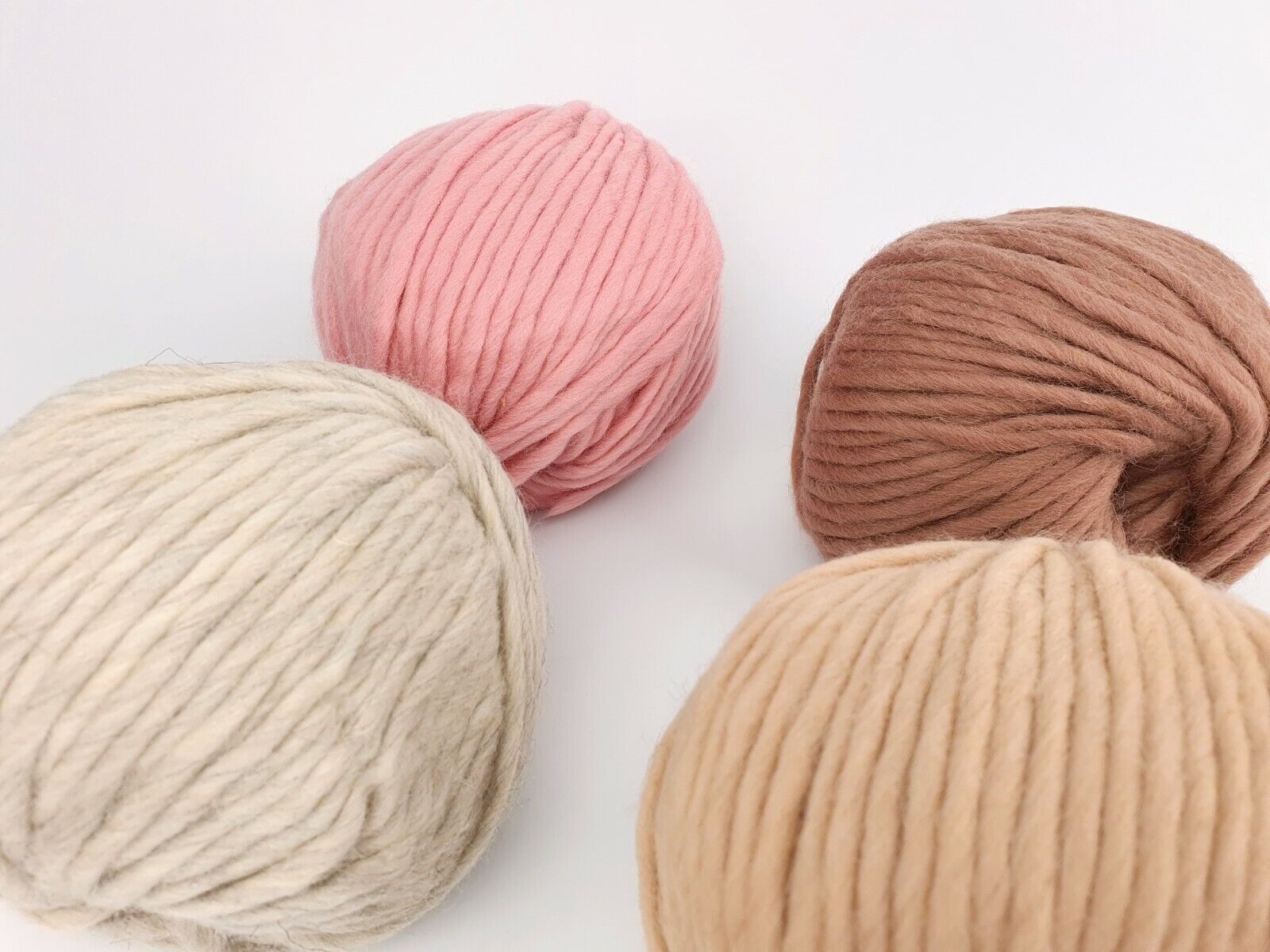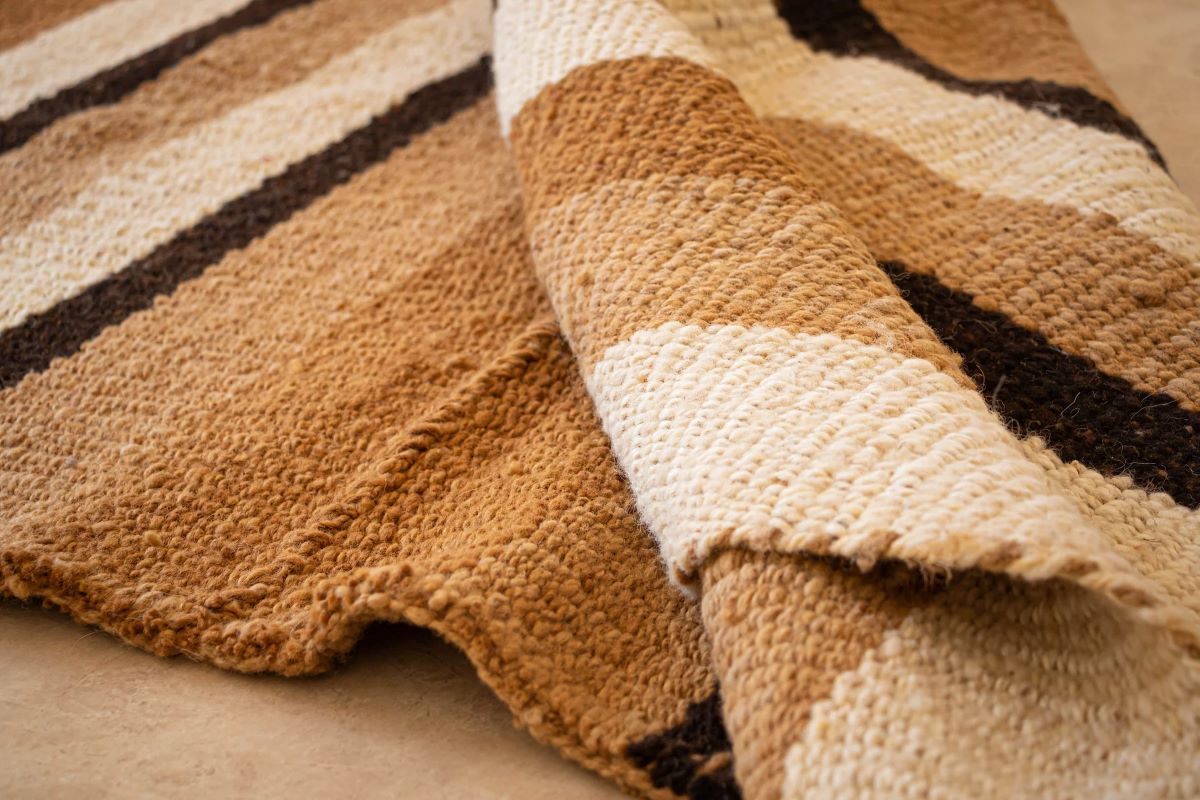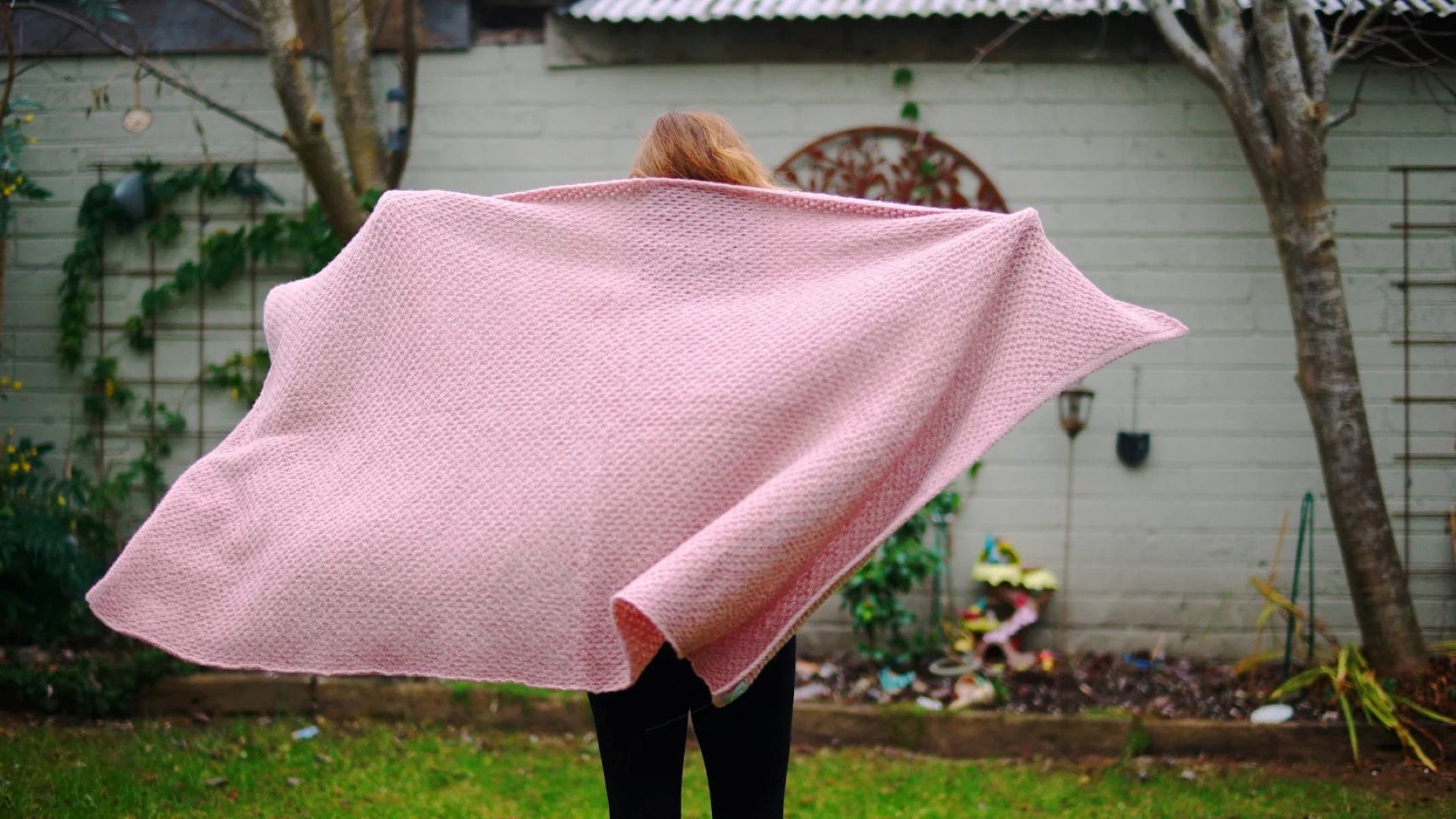

Articles
How To Wash A Wool Blanket
Modified: February 23, 2024
Learn how to properly wash a wool blanket with our informative articles. Keep your blanket clean and cozy for years to come.
(Many of the links in this article redirect to a specific reviewed product. Your purchase of these products through affiliate links helps to generate commission for Storables.com, at no extra cost. Learn more)
Introduction
Welcome to our comprehensive guide on how to wash a wool blanket. Wool blankets are not only cozy and warm but also require special care to keep them clean and in great condition. Washing wool blankets may seem daunting at first, as improper cleaning can result in shrinking, stretching, or damaging the delicate fibers. However, with the right supplies and techniques, you can safely and effectively clean your wool blanket to maintain its quality and prolong its lifespan.
In this article, we will provide step-by-step instructions on hand-washing and machine-washing wool blankets, as well as tips to ensure successful drying and care. So, gather your supplies and let’s get started!
Key Takeaways:
- Keep your wool blanket cozy and in great condition by following the right washing method, using mild detergents, and prioritizing gentle handling to maintain its quality and longevity.
- Whether hand-washing or machine-washing, always check the care label, spot clean when possible, and store your wool blanket properly to ensure it remains clean, soft, and in optimal condition for years to come.
Supplies Needed
Before you begin the process of washing your wool blanket, it’s important to gather all the necessary supplies. Having everything ready will make the task more efficient and ensure you have what you need to properly care for your blanket.
- Mild wool detergent: Look for a detergent specifically designed for wool or other delicate fabrics. Avoid using harsh chemicals or regular laundry detergents, as these can damage the fibers.
- Bathtub or large basin: You will need a clean and spacious area to wash your wool blanket. If you don’t have a bathtub, a basin or clean sink can work as well.
- Soft-bristled brush: This will be used to gently scrub any stained or soiled areas on the blanket.
- White vinegar: Optional but useful for removing stains and odors. Vinegar is a natural and gentle cleaning agent.
- Drying rack or flat surface: After washing, you will need a place to air dry the wool blanket. A drying rack or a flat surface, such as a clean towel, works well.
- Lint roller or brush: To remove any lint or pet hair from the blanket before or after washing.
- Delicate wash bag: If you plan to machine-wash your wool blanket, using a delicate wash bag will provide an extra layer of protection for the fabric.
Make sure you have all these supplies within reach before you proceed with washing your wool blanket. Having everything prepared will make the process smoother and prevent any interruptions in the washing process.
Preparing the Wool Blanket for Washing
Before you start the actual washing process, it’s essential to prepare the wool blanket to ensure effective and safe cleaning. Taking these preliminary steps will help avoid any potential damage to the fibers and preserve the quality of your blanket.
- Check the care label: Begin by checking the care label or instructions provided by the manufacturer. The label will indicate if the wool blanket is machine-washable or if it requires hand-washing. It may also provide specific temperature recommendations or any additional care instructions.
- Inspect for stains or soiling: Examine the wool blanket for any visible stains or soiling. It’s important to treat these areas before washing to ensure they don’t become set in during the cleaning process. Use a soft-bristled brush to gently scrub the stains with a small amount of mild detergent or white vinegar. Allow the solution to sit on the stain for a few minutes before rinsing it off.
- Remove excess dirt and debris: Shake or lightly brush the wool blanket outdoors to remove any loose dirt, debris, or pet hair. Alternatively, you can use a lint roller or brush to remove these particles. This step will prevent them from clogging your washing machine or sink and ensure a more thorough wash.
By checking the care label, treating stains, and removing excess dirt, you are now ready to proceed with washing your wool blanket. These simple preparatory steps will help optimize the cleaning process and maintain the longevity of your blanket.
Choosing the Right Washing Method
When it comes to washing a wool blanket, you have two main options: hand-washing or machine-washing. The choice of method will depend on several factors, such as the blanket’s size, care instructions, and personal preference. Let’s explore both methods to help you determine the right approach for your wool blanket.
Hand-washing: Hand-washing is often the recommended method for washing wool blankets, especially if they are delicate or have intricate patterns. Hand-washing allows for more control and gentle agitation, minimizing the risk of stretching or damaging the fibers. This method is also suitable for blankets with specific care instructions for hand-washing only. We will outline the hand-washing process in the next section.
Machine-washing: Machine-washing can be suitable for some wool blankets, particularly if they are labeled as machine-washable. However, it’s important to note that machine-washing may result in more agitation and potential shrinkage if not done correctly. If you choose to machine-wash your wool blanket, make sure to use a delicate or wool cycle, a low temperature setting, and a gentle detergent. Placing the blanket in a delicate wash bag can provide extra protection during the wash cycle.
Consider the size of your wool blanket and the capacity of your washing machine when deciding between hand-washing and machine-washing. Larger blankets may be more challenging to hand-wash, while smaller ones can easily fit into a washing machine. Additionally, take into account any specific care instructions and the overall condition of your wool blanket. If in doubt, it’s generally safer to opt for hand-washing to ensure the best care and longevity.
Now that you understand the different washing methods, you can choose the appropriate one for your wool blanket. Whether you decide on hand-washing or machine-washing, the following sections will provide step-by-step instructions to help you achieve optimal results.
Hand-washing the Wool Blanket
If you’ve decided to hand-wash your wool blanket, follow these step-by-step instructions to safely and effectively clean it:
- Fill a clean bathtub or large basin with lukewarm water. Ensure there’s enough water to fully submerge the wool blanket.
- Add a small amount of mild wool detergent to the water. Follow the instructions on the detergent bottle for the appropriate amount to use.
- Gently swish the water to create a mild soapy solution.
- Place the wool blanket into the water, fully submerging it. Gently agitate the blanket by moving it around in the water for a few minutes.
- Allow the blanket to soak in the soapy water for about 15-20 minutes. This will help loosen any dirt or residue from the fibers.
- After soaking, drain the soapy water from the tub or basin.
- Rinse the wool blanket with clean lukewarm water until no soap residue remains. Lightly squeeze the blanket to remove excess water, being careful not to wring or twist it.
- Fill the tub or basin again with fresh water and add a small amount of white vinegar (optional). The vinegar will help neutralize any remaining soap residue and act as a natural fabric softener.
- Submerge the wool blanket in the vinegar-infused water and gently swish it around for a minute or two.
- Drain the water and rinse the blanket once again with clean water.
- Remove the wool blanket from the tub or basin and gently press it between towels to remove excess water.
- Lay the blanket flat on a clean, dry towel or a drying rack to air dry. Avoid wringing or hanging the blanket, as this may cause stretching or deformation.
- Allow the wool blanket to fully air dry, flipping it occasionally to ensure even drying. This may take several hours or even a day, depending on the thickness of the blanket.
Once the wool blanket is completely dry, fluff it gently to restore its loft and softness. You can also use a soft-bristled brush to smooth out any wrinkles or fibers that may have become slightly tangled during the washing process.
Hand-washing your wool blanket provides a gentle and meticulous approach to cleaning, ensuring the preservation of its quality and longevity.
When washing a wool blanket, use a gentle wool detergent and cold water to avoid shrinking or damaging the fibers. Always air dry the blanket to maintain its shape and softness.
Read more: How To Store Wool Blankets
Machine-washing the Wool Blanket
If you’ve determined that your wool blanket is suitable for machine-washing, follow these steps to safely clean it:
- Check the care label or manufacturer’s instructions to ensure your wool blanket is labeled as machine-washable.
- Place the wool blanket in a delicate wash bag to provide an extra layer of protection for the fibers.
- Ensure that your washing machine is set to a delicate or wool cycle, as these settings are designed to minimize agitation.
- Add a small amount of mild wool detergent to the machine. Follow the instructions on the detergent bottle for the appropriate amount.
- Start the machine and allow it to complete the wash cycle. Make sure the water temperature is set to cold or lukewarm to prevent shrinkage.
- Once the cycle is complete, remove the wool blanket from the wash bag.
- Gently squeeze out any excess water from the blanket, being careful not to wring or twist it.
- Lay the wool blanket flat on a clean, dry towel or a drying rack to air dry. Avoid hanging the blanket, as this may cause stretching or deformation.
- Allow the wool blanket to fully air dry, flipping it occasionally to ensure even drying. This may take several hours or even a day, depending on the thickness of the blanket.
It’s important to note that machine-washing may still pose a risk to the delicate fibers of a wool blanket, even with the appropriate settings. If you’re unsure about machine-washing your wool blanket or if it has intricate patterns or delicate details, it’s safer to opt for hand-washing instead.
Machine-washing can be a convenient option for cleaning your wool blanket, but always exercise caution and follow the specific care instructions provided by the manufacturer.
Drying the Wool Blanket
Properly drying your wool blanket is crucial to maintain its shape, softness, and overall quality. Follow these steps to ensure the best drying method for your wool blanket:
- After washing, gently squeeze out any excess water from the wool blanket. Avoid wringing or twisting the fibers, as this can cause stretching or damage.
- Place a clean, dry towel on a flat surface, such as a bed or a table.
- Lay the wool blanket flat on the towel, smoothing out any wrinkles or creases. Ensure that the blanket is spread evenly without any folds or bunching.
- Roll up the towel and the blanket together, starting from one end. This will help absorb excess water from the blanket.
- Apply gentle pressure along the rolled-up towel to squeeze out additional moisture.
- Unroll the towel and carefully remove the wool blanket.
- Lay the wool blanket flat on a drying rack or on a fresh, dry towel. Ensure proper air circulation around the blanket to facilitate drying.
- Flip the blanket periodically to ensure even drying on both sides.
- Avoid exposing the wool blanket to direct sunlight or heat sources, as this can cause fading or damage to the fibers. Instead, choose a well-ventilated area with indirect light.
- Allow the wool blanket to air dry completely before folding or storing it. This can take several hours or even a day, depending on the thickness of the blanket and the surrounding humidity.
Remember to be patient during the drying process and avoid rushing it by using artificial heat or excessive agitation. Allowing your wool blanket to dry naturally will help maintain its softness and shape.
If you’re running short on time or need the wool blanket to dry quickly, you can opt for a low-heat setting on a dryer. However, exercise caution as excessive heat can shrink or damage the fibers. Place the wool blanket in a dryer with clean tennis balls or dryer balls to help fluff and redistribute the fibers as it dries.
By following the appropriate drying methods, you’ll ensure that your wool blanket retains its quality and remains in optimal condition for years to come.
Additional Tips and Considerations
When it comes to washing a wool blanket, there are a few additional tips and considerations to keep in mind to ensure the best care for your blanket:
- Spot clean when possible: If you notice a small stain or spill on your wool blanket, try to spot clean it immediately using a mild detergent or white vinegar. This can help prevent the need for a full wash and preserve the quality of your blanket.
- Avoid using fabric softeners: Fabric softeners can leave residue on wool fibers and affect their natural softness. Instead, consider using white vinegar as a natural fabric softener during the rinse cycle to help maintain the wool’s texture.
- Store your wool blanket properly: When not in use, store your wool blanket in a cool, dry place away from direct sunlight. This will prevent exposure to moisture, sunlight, and potential pests that can damage the fibers.
- Avoid using bleach or harsh chemicals: Bleach and other harsh chemicals can weaken the wool fibers and cause color fading or damage. Stick to mild detergents specifically formulated for wool or delicate fabrics.
- Consider professional cleaning: If your wool blanket has stubborn stains or requires deep cleaning, it may be worthwhile to seek professional cleaning services. Professional cleaners have the expertise and equipment to handle delicate wool fabrics effectively.
- Test for colorfastness: Before washing your wool blanket, especially if it’s a vibrant or dark color, perform a colorfastness test by dampening a small, inconspicuous area and blotting it with a white cloth. If there’s no color transfer, it’s safe to proceed with washing.
- Follow care instructions: Always refer to the care label or manufacturer’s instructions for specific washing and drying instructions for your wool blanket. Different blankets may have unique care requirements.
By following these additional tips and considerations, you can ensure that your wool blanket remains clean, soft, and in optimal condition for years to come.
Conclusion
Washing a wool blanket doesn’t have to be a daunting task. By following the right techniques and using the appropriate supplies, you can effectively clean your wool blanket while maintaining its quality and longevity. Whether you choose to hand-wash or machine-wash, it’s essential to prioritize gentle handling and use mild detergents specifically formulated for wool or delicate fabrics.
Remember to always check the care label or manufacturer’s instructions for any specific cleaning recommendations for your wool blanket. Spot cleaning, proper storage, and occasional professional cleaning can also help preserve the beauty and functionality of your blanket over time.
With the step-by-step instructions and additional tips provided in this guide, you can confidently wash your wool blanket without compromising its softness or structure. Enjoy the cozy warmth and comfort of your freshly cleaned wool blanket, knowing that you’ve taken the necessary steps to maintain its quality for many more years to come.
So, gather your supplies, follow the appropriate washing method, and give your wool blanket the care it deserves. Happy cleaning!
Frequently Asked Questions about How To Wash A Wool Blanket
Was this page helpful?
At Storables.com, we guarantee accurate and reliable information. Our content, validated by Expert Board Contributors, is crafted following stringent Editorial Policies. We're committed to providing you with well-researched, expert-backed insights for all your informational needs.

